As traders navigate the intricate landscape of financial markets, mastering tools like the Williams %R Indicator can be a game-changer. The seven proven steps for effectively utilizing this indicator offer a structured approach to interpreting market dynamics and making informed decisions.
From understanding the indicator's fundamentals to developing tailored trading strategies, each step holds the key to unlocking the potential of Williams %R in enhancing trading outcomes. By delving deeper into these steps, traders can gain valuable insights into harnessing the power of this indicator and navigating market complexities with confidence.
Understanding Williams %R Indicator
Analyzing market dynamics through the lens of the Williams %R indicator provides traders with valuable insights into potential overbought or oversold conditions. Unlike the Stochastic indicator that compares the closing price to the lowest low, Williams %R focuses on the close relative to the highest high, aiding in identifying market reversals. Traders rely on Williams %R to pinpoint entry and exit points, capitalizing on overbought signals above -20 and oversold signals below -80. Utilizing Williams %R as a mean reversion tool, traders develop strategies to navigate volatile market conditions efficiently.
Failure to comprehend the implications of overbought or oversold conditions can result in traders losing money rapidly due to misguided trading decisions. By incorporating Williams %R into their technical analysis arsenal, traders can make informed choices based on calculated insights rather than emotional reactions. The formulaic calculation of Williams %R, considering the highest high, lowest low, and closing price, equips traders with a reliable gauge for assessing market conditions and optimizing trading strategies.
Calculating Williams %R Formula
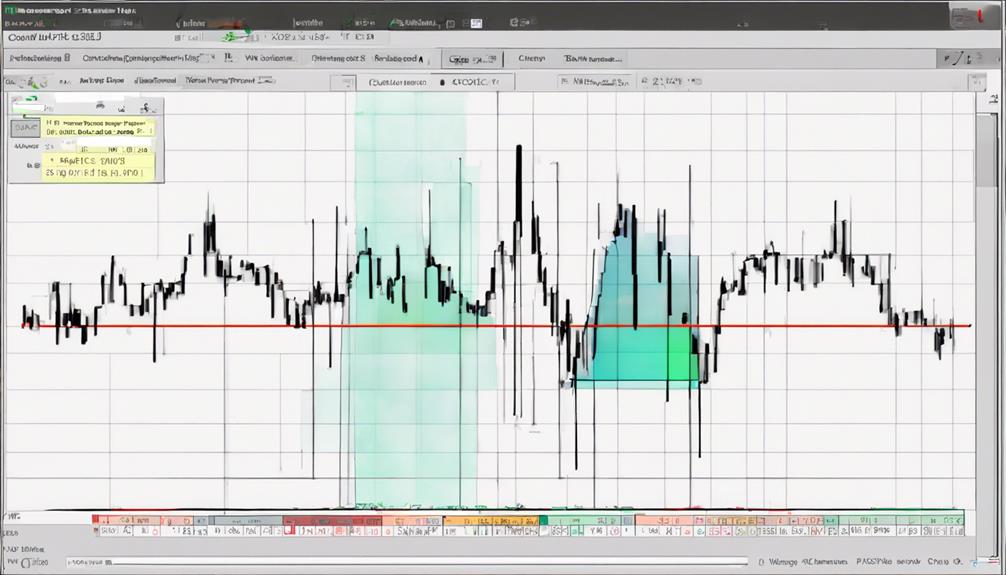
Traders seeking to effectively gauge market dynamics often turn to the Williams %R indicator, which is calculated by comparing the current closing price to the highest high within a specified period. The formula for Williams %R is as follows:
- Formula: Williams %R = ((Highest High – Close) / (Highest High – Lowest Low)) * -100.
- The lookback period, often set at 14 days, determines the calculation range for the Williams %R indicator.
- Williams %R values range between 0 and -100, with 0 indicating overbought conditions and -100 indicating oversold conditions.
- The Williams %R formula helps traders identify potential entry and exit points based on market momentum and price levels.
- By using the Williams %R indicator, traders can develop a strategy to capitalize on both bullish and bearish trends effectively.
Calculating the Williams %R formula provides traders with valuable insights into market conditions, allowing for informed decision-making based on the indicator's signals. Understanding how to utilize this indicator is crucial for devising a successful trading strategy.
Implementing Williams %R in Trading
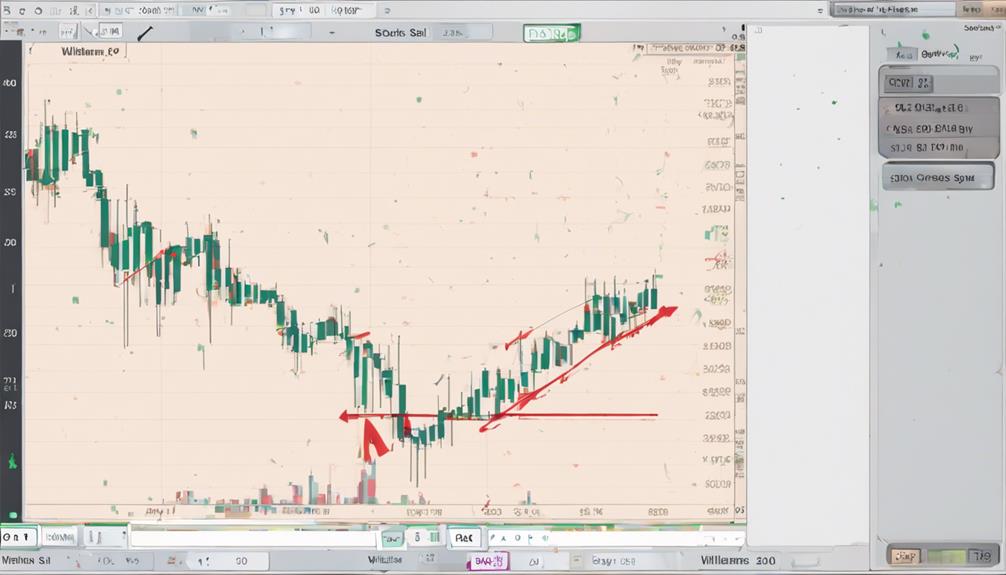
Utilizing the Williams %R indicator in trading strategies allows for a comprehensive analysis of market dynamics and potential entry and exit points based on momentum and price levels. The Williams %R indicator, ranging from 0 to -100, helps identify overbought and oversold market conditions. Traders often look for buy signals when the indicator crosses above -80 and sell signals when it crosses below -20.
Incorporating Williams %R into trading strategies involves managing risk effectively to optimize profitability and minimize losses. By interpreting Williams %R values, traders can assess market sentiment; readings above -20 suggest overbought conditions, while those below -80 indicate oversold situations. To implement Williams %R successfully, traders must understand its signals, consider the broader market context, and complement it with other indicators for a well-rounded analysis.
This approach enhances decision-making within a trading strategy by leveraging the insights provided by the Williams %R indicator.
Developing Effective Williams %R Strategies
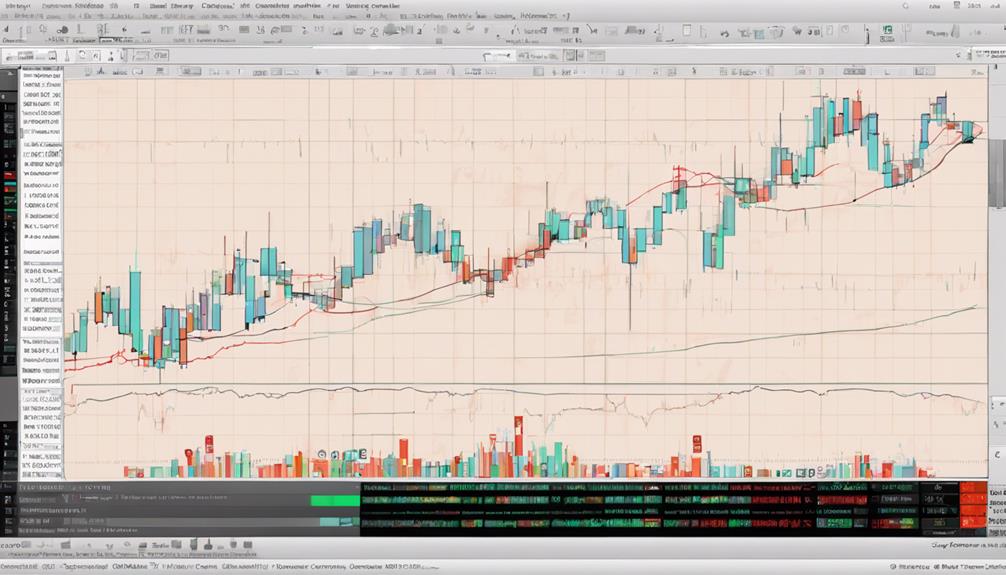
In developing effective Williams %R strategies, traders can leverage the indicator's signals to capitalize on market opportunities and optimize trading decisions.
- Take Advantage of Buy Signals: Utilize Williams %R to identify potential buy opportunities when the indicator falls below the oversold line at -80.
- Utilize Sell Signals: Implement strategies by looking for sell signals as Williams %R rises above the overbought line at -20.
- Incorporate Leading Indicator: Consider Williams %R as a leading indicator to anticipate market reversals and trend shifts.
- Enhance Strategy with Confirmation: Combine Williams %R with other technical indicators to confirm signals and enhance trading decisions.
- Backtest for Performance: Engage in backtesting Williams %R strategies to assess historical performance and refine trading approaches.
Key Considerations for Williams %R Trading
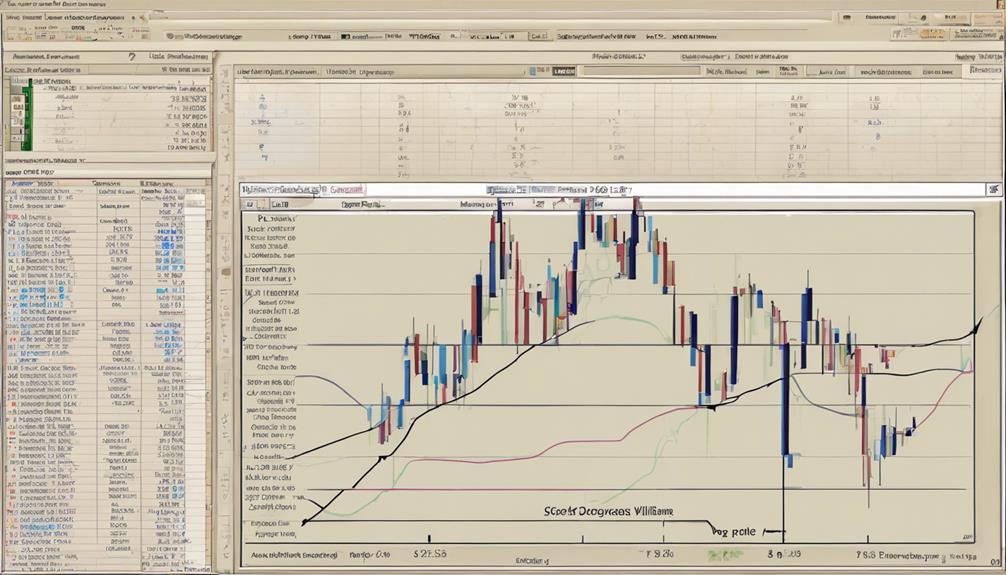
When engaging in Williams %R trading, it is crucial to consider various key aspects such as trading strategies and risk management. These elements play a significant role in maximizing the effectiveness of the indicator and ensuring informed decision-making.
Trading Strategies
Effective implementation of trading strategies involving the Williams %R indicator requires a nuanced understanding of key considerations for successful trading outcomes.
When utilizing the Williams %R Strategy, traders should be mindful of the indicator's overbought and oversold conditions. Holding positions until the indicator generates opposite signals can help maximize profits.
Risk management is vital due to the high risk of losing money associated with trading based on Williams %R. Combining this indicator with others can offer a more comprehensive analysis, aiding in making well-informed trading decisions.
Risk Management
To enhance trading outcomes when utilizing the Williams %R indicator, prudent risk management practices are essential. Implementing stop-loss orders based on Williams %R signals is crucial to control the risk of losing money. It is advisable to consider position sizing aligned with risk tolerance and account size to effectively manage potential losses. Utilizing proper risk-reward ratios ensures that potential profits outweigh probable losses in Williams %R trades.
Adapting trading strategies to market volatility and conditions aids in managing risks efficiently. Regularly reviewing and analyzing trading performance helps identify patterns and enhances risk management strategies when using Williams %R. By incorporating these key considerations, traders can optimize their risk management approach and improve overall trading performance.
Optimizing Williams %R Indicator
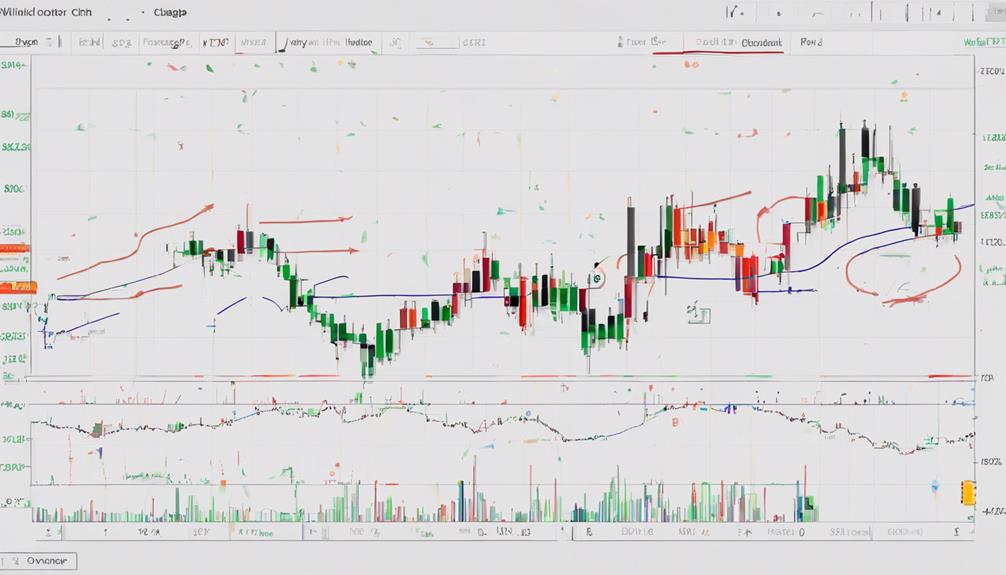
Optimizing the Williams %R indicator involves strategically adjusting the lookback period to enhance signal accuracy and responsiveness in market analysis. When fine-tuning this indicator, traders can consider the following steps:
- Experiment with different lookback periods: Trying shorter intervals like 5 or 10 days can improve the indicator's responsiveness to market dynamics.
- Conduct backtesting: Analyzing various lookback periods through historical data can help determine the most effective setting for the Williams %R indicator.
- Opt for shorter lookback periods: Optimization may reveal that shorter intervals offer more precise signals for making informed trading choices.
- Balance responsiveness and reliability: Finding the sweet spot between quick responses to market changes and dependable signals is crucial for successful optimization.
- Monitor performance: Continuously evaluating the indicator's effectiveness after adjustments ensures that it remains optimized for current market conditions.
Enhancing Trading With Williams %R
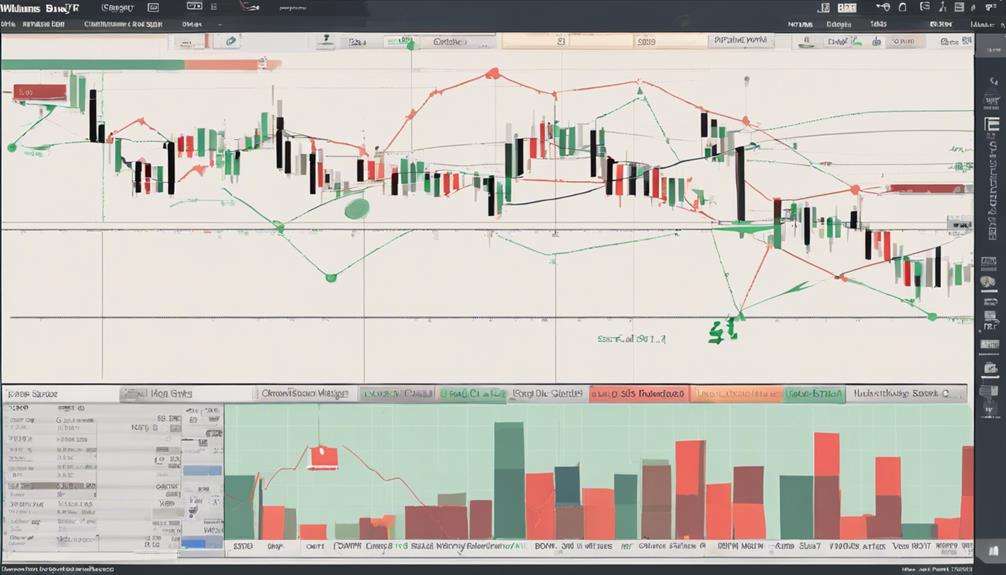
Enhancing trading with the Williams %R indicator involves incorporating trading strategy tips and mastering indicator interpretation techniques.
By leveraging the insights provided by Williams %R, traders can make informed decisions on entry and exit points in the market.
This approach, when paired with effective risk management strategies, can enhance overall trading performance and increase profitability.
Trading Strategy Tips
Implementing a sound trading strategy is crucial for optimizing the use of the Williams %R indicator in the financial markets. When utilizing Williams %R, traders can enhance their trading by following these tips:
- Use Williams %R to identify overbought conditions above -20 and oversold signals below -80.
- Execute trades by buying when %R crosses above -80 and selling when it crosses below -20.
- Combine Williams %R with proper risk management techniques to improve trading effectiveness and mitigate potential losses.
- Analyze market sentiment by considering overbought conditions when %R is above -20 and oversold conditions when %R is below -80.
- Employ Tuned Script and Pine Alpha script for Pine Version 4 to efficiently implement the Williams %R trading strategy.
Indicator Interpretation Techniques
Utilizing the Williams %R indicator in financial markets requires a deep understanding of indicator interpretation techniques to enhance trading strategies effectively.
Williams %R values above -20 typically indicate overbought conditions, suggesting a potential reversal or pullback in price. Conversely, readings below -80 signal oversold conditions, hinting at a possible price increase.
Traders often use Williams %R to anticipate trend reversals before they occur, providing valuable insights for adjusting positions or timing entry and exit points. By recognizing key levels such as %R crossing above -20 or below -80, traders can make actionable decisions in response to market dynamics.
Additionally, integrating Williams %R signals with other technical indicators offers a more comprehensive assessment of market conditions, aiding in developing robust trading strategies.
Can the Proven Steps for Utilizing Williams %R Indicator Also Apply to Technical Analysis?
Yes, the 7 steps technical analysis Williams %R can be utilized in broader technical analysis strategies. By incorporating the proven steps for utilizing Williams %R indicator into your overall analysis, you can gain valuable insights into market trends and make well-informed investment decisions.
Frequently Asked Questions
How Do You Use William R Indicator?
The Williams %R indicator is utilized by traders to identify overbought and oversold market conditions. Buy signals occur when it crosses above -80, while sell signals are generated when it crosses below -20, aiding in decision-making strategies.
What Is the Best Setting for Williams R?
The optimal setting for the Williams %R indicator varies based on individual trading strategies and risk tolerance levels. Traders often experiment with different lookback periods, such as 5, 10, 20, or 30, to find the best fit for their specific needs.
What Is the Williams Percentage Range Strategy?
The Williams %R strategy involves utilizing the Williams %R indicator to identify overbought and oversold market conditions. Traders can enter buy positions when the indicator crosses above -80 and sell when it crosses below -20 for potential profits.
What Is the Difference Between RSI and Williams R Indicator?
Revealing the distinction between RSI and Williams %R, RSI evaluates price momentum from 0 to 100, while Williams %R oscillates between 0 and -100. RSI targets overbought and oversold, whereas Williams %R focuses on short-term price sensitivity.
Conclusion
In conclusion, the strategic utilization of the Williams %R Indicator offers traders a powerful tool for making informed decisions in the financial markets.
By understanding its calculation formula, implementing effective trading strategies, and considering key market factors, traders can optimize their trading experience and enhance profitability.
Through careful analysis and risk management, the Williams %R Indicator can be leveraged to identify overbought and oversold conditions, providing valuable insights for successful trading strategies.
